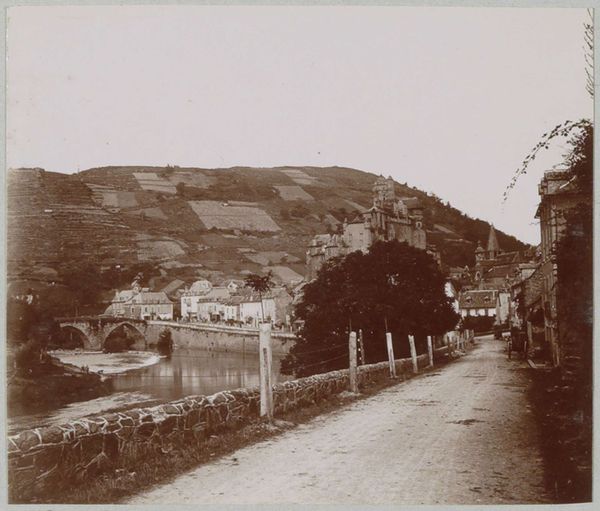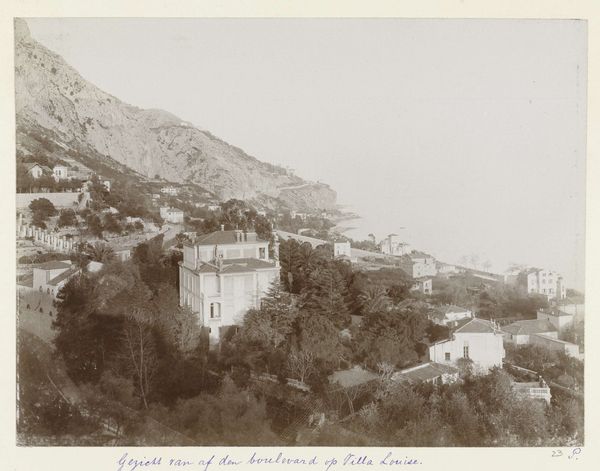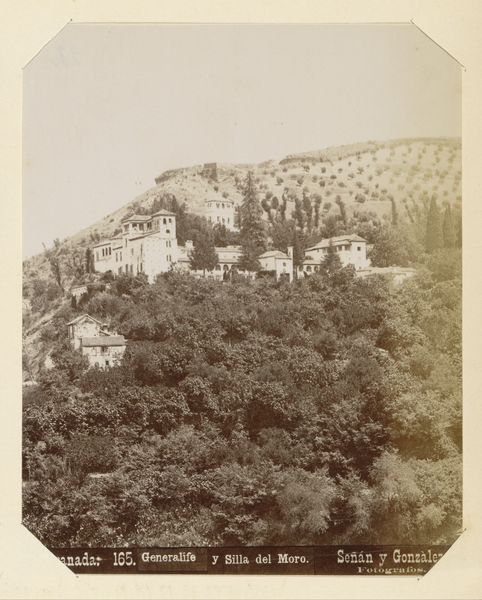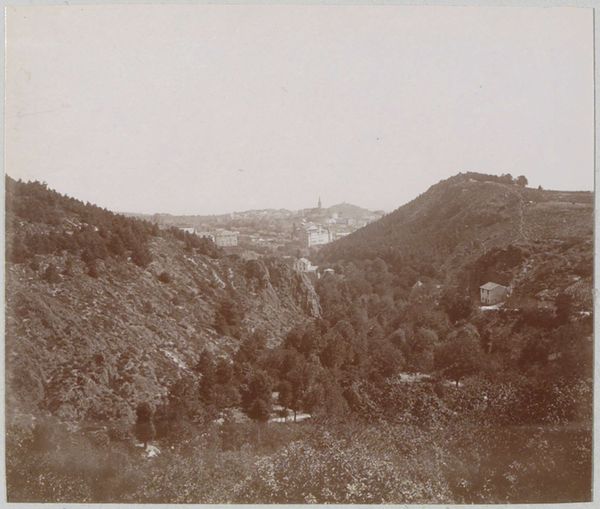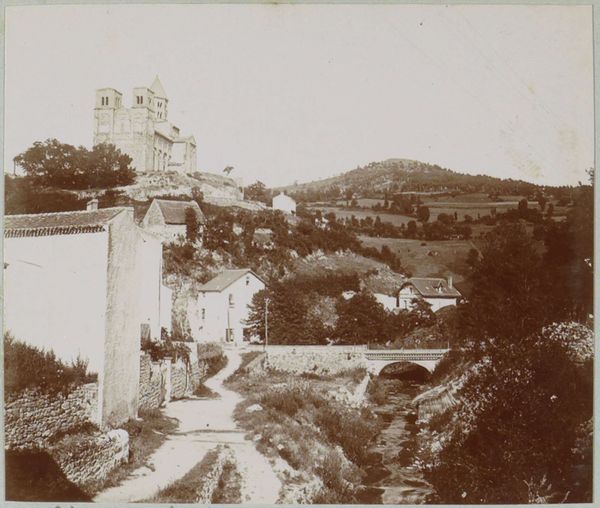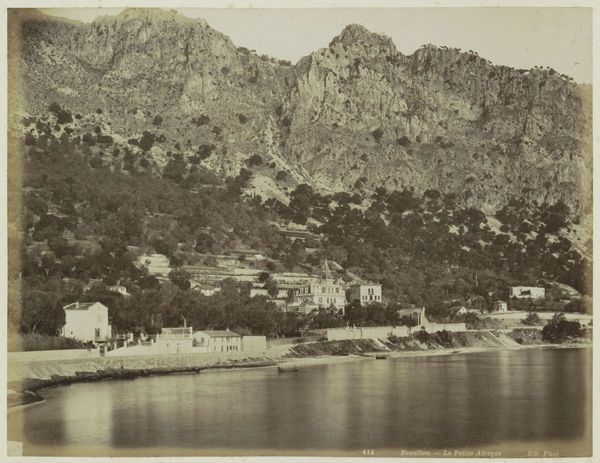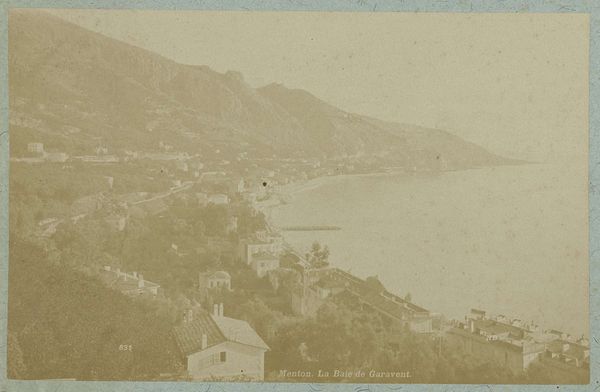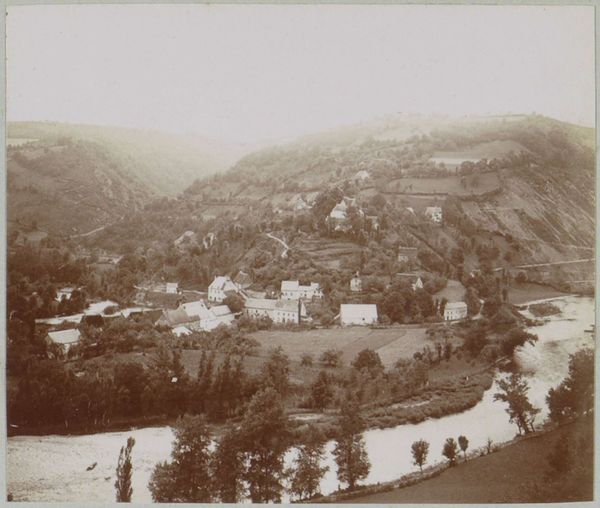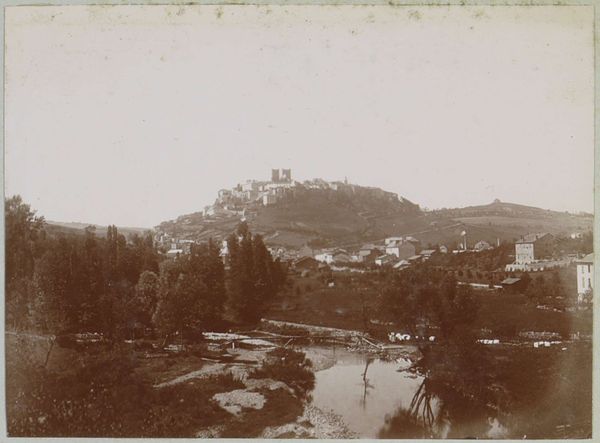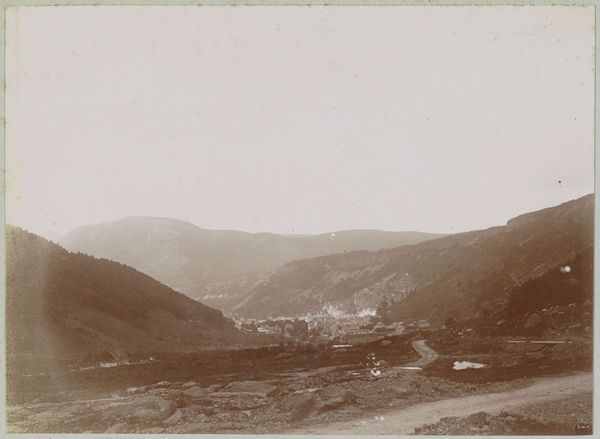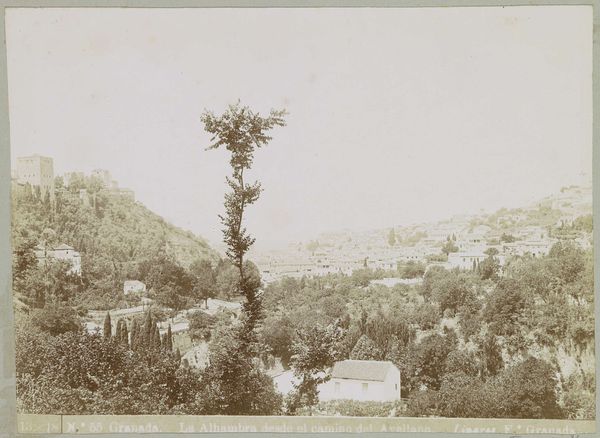
Villa Louise gelegen in de zuid-Franse kustplaats Menton gezien vanaf het station c. 1886 - 1896
0:00
0:00
photography, albumen-print
#
scenic
#
outdoor environmental image
#
pictorialism
#
landscape
#
outdoor photography
#
photography
#
outdoor scenery
#
cityscape
#
albumen-print
Dimensions: height 164 mm, width 222 mm, height 322 mm, width 498 mm
Copyright: Rijks Museum: Open Domain
Curator: Oh, isn't this dreamy? Like stepping into a sepia-toned memory. Editor: Indeed. We're looking at "Villa Louise gelegen in de zuid-Franse kustplaats Menton gezien vanaf het station," a photographic print dating roughly from 1886 to 1896. It's attributed to Henry Pauw van Wieldrecht and held at the Rijksmuseum. It’s an albumen print, so that warm tone is intrinsic to the process. Curator: Warm and nostalgic! It almost smells of old paper and sunshine. The composition pulls me right in. That hillside dotted with buildings—it feels both intimate and expansive. It has this feeling, like you are meant to long for something unseen and distant in the future. Editor: There's a deliberate visual language at play here. Notice how the train station serves as the viewer’s anchor. Railway stations became powerful symbols of progress, but they also became transitional thresholds to the personal space, hinting at travel, transformation, and the possibility of venturing towards self-discovery and experiences. Curator: Yes, that train station is basically winking at you! I think this photographer did the impossible. Pauw Van Wieldrecht took an ordinary moment and elevated it to almost mythic quality, capturing something uniquely poised at the edge of change. The location itself helps a lot, it's as if there is always a chance encounter that might change one’s fate. It's gorgeous but unsettling. Editor: That’s precisely the Pictorialist aesthetic, a movement emphasizing photography as fine art. Albumen prints offer detail but also lend themselves to soft focus and tonal manipulation. It is clear Pauw Van Wieldrecht wants to offer a mood or an emotional response, almost more than representing reality. Curator: Exactly! To me it isn't about recording a place as much as making an image infused with emotional resonance. He's basically painting with light, isn't he? I could stare at that dreamy hillside all day. Editor: And isn't it fascinating how a simple train station view can unpack centuries of aspirations—mobility, societal changes, cultural exchanges—encoded into a single frame? Curator: Makes you wonder what dreams those long-ago passengers carried as their train pulled into that station. Editor: Or perhaps what echoes of that past we, the present-day viewers, still hold within.
Comments
No comments
Be the first to comment and join the conversation on the ultimate creative platform.
